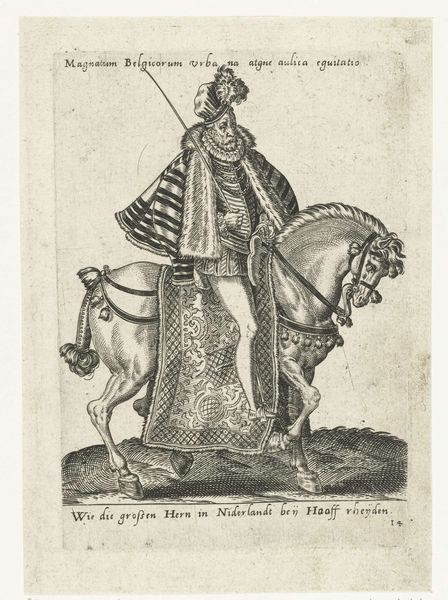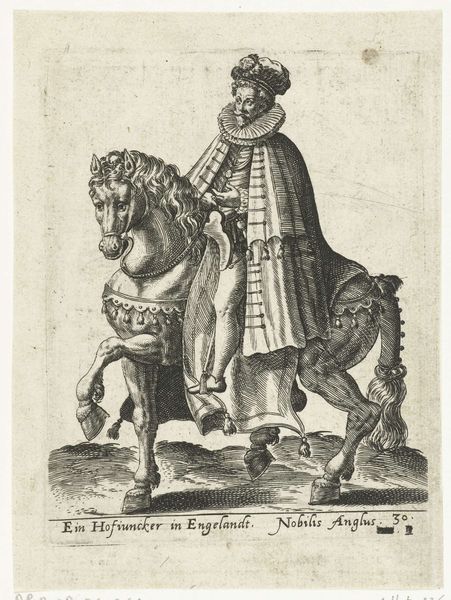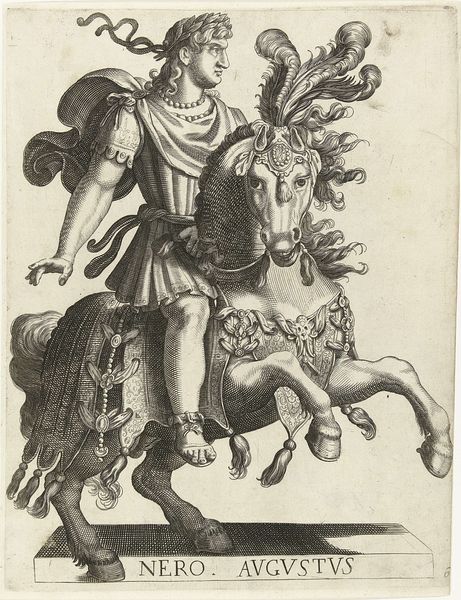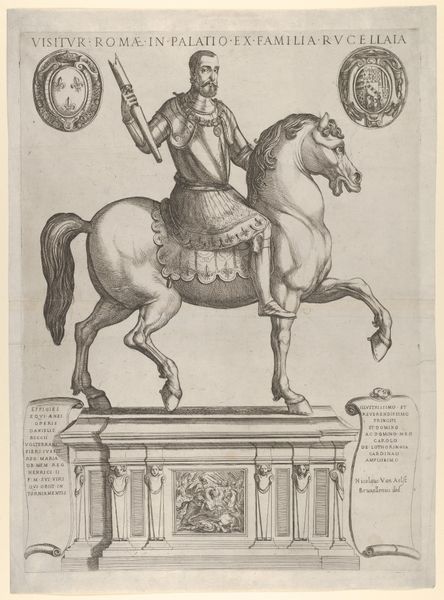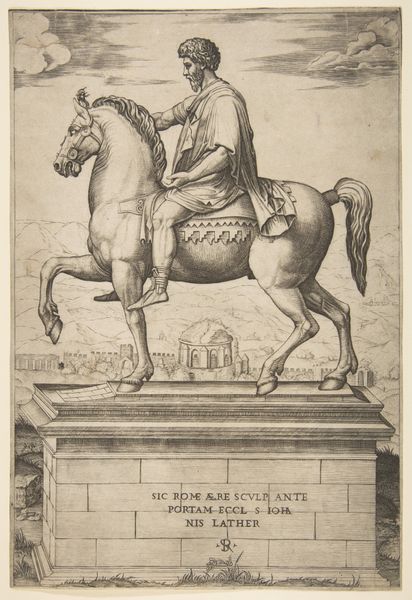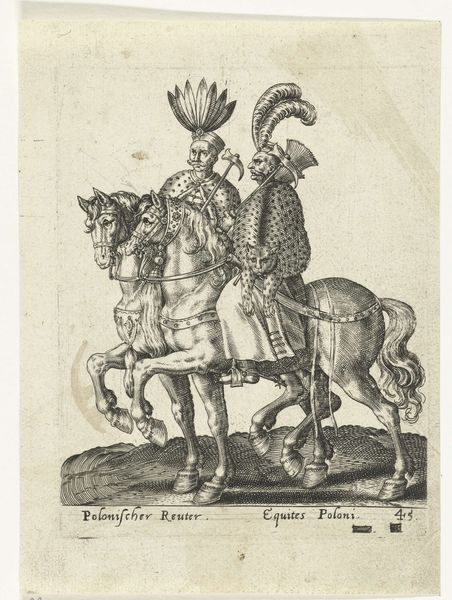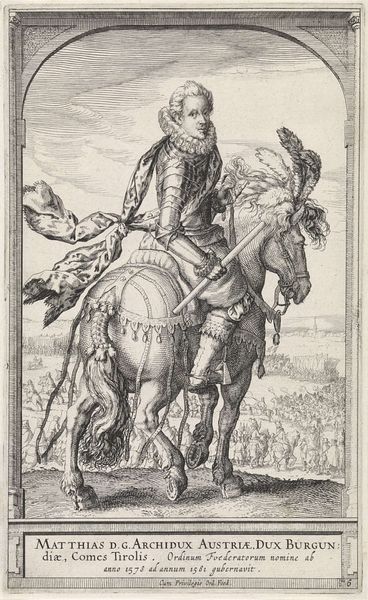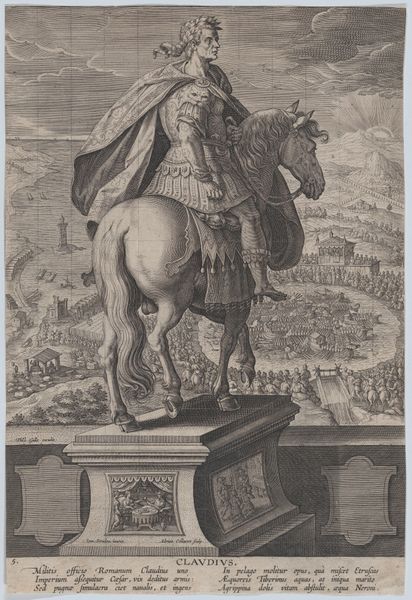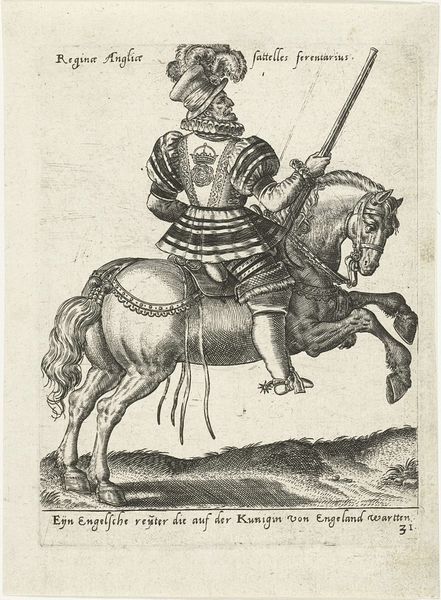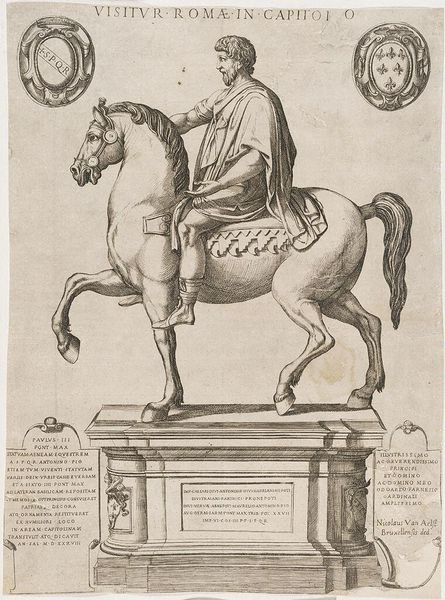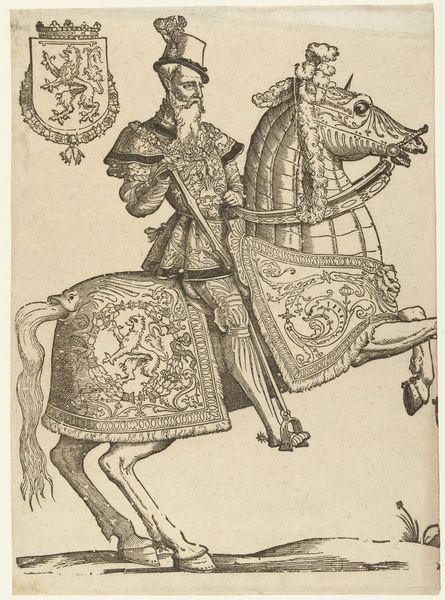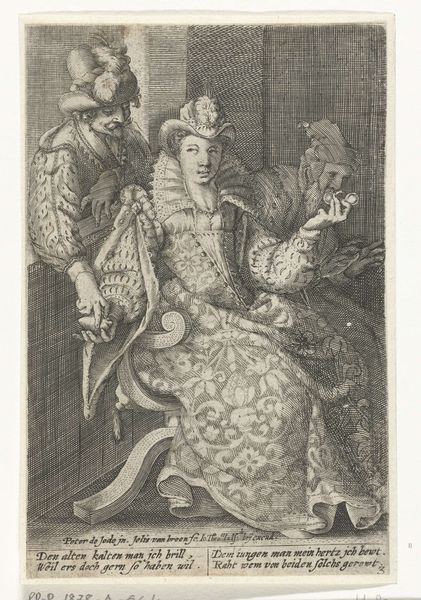
engraving
#
portrait
#
baroque
#
history-painting
#
engraving
#
erotic-art
Dimensions: height 287 mm, width 216 mm
Copyright: Rijks Museum: Open Domain
Curator: Look at this intriguing portrait, “Ruiterportret van Karel I, Koning van Engeland,” dating roughly from 1625 to 1665. It's an engraving by Cornelis van Dalen I, now residing here at the Rijksmuseum. Editor: Immediately striking—almost overwhelmingly so! The scale is somewhat confounding, especially the relationship between Charles and his steed, almost as if they were competing for presence in the frame. A fascinating dynamic is at play in the rendering of light. Curator: It is true that Van Dalen's choices of line and tone invite careful study. Consider how the lines create texture, particularly in the regal fabrics and the horse’s mane, almost distracting the eye. This etching captures a study in line and form rather than merely serving as a reproductive print of tonal subtleties in light and shadow. Editor: Yes, there is definitely a dialogue of strength being woven here. Horses, through antiquity and into the Renaissance, function as clear symbols of status and rulership, yet in this image the ruler barely crests above the crown of his mount's head. Do you read this almost playful distortion as an invitation? Perhaps to challenge power? Curator: More likely it adheres to the representational conventions of the time. We have to look at how line is strategically used, in how he is presented sitting on the horse and in his attire. The artist made this as an object meant to present authority as such, even with our understanding of what came to pass regarding King Charles I. Editor: Indeed, one can almost trace his story of majesty, revolution, and the regicide. But back to our subject, look at how "EDYNBURGH" is printed into the composition. A powerful signal of sovereignty, certainly meant to carry more meaning than just being the site of some military encounter! It reveals that art serves a potent tool in consolidating authority through familiar icons. Curator: Well put, there are clear intentional forms present here; from its lines, to what the subjects hold—as an engraving, Van Dalen crafted a document for study in its period, inviting the beholder to view power through pattern and subject position, revealing form as content in and of itself. Editor: It prompts reflection about not only authority but on ourselves, who view them. Thank you for your insights!
Comments
No comments
Be the first to comment and join the conversation on the ultimate creative platform.
